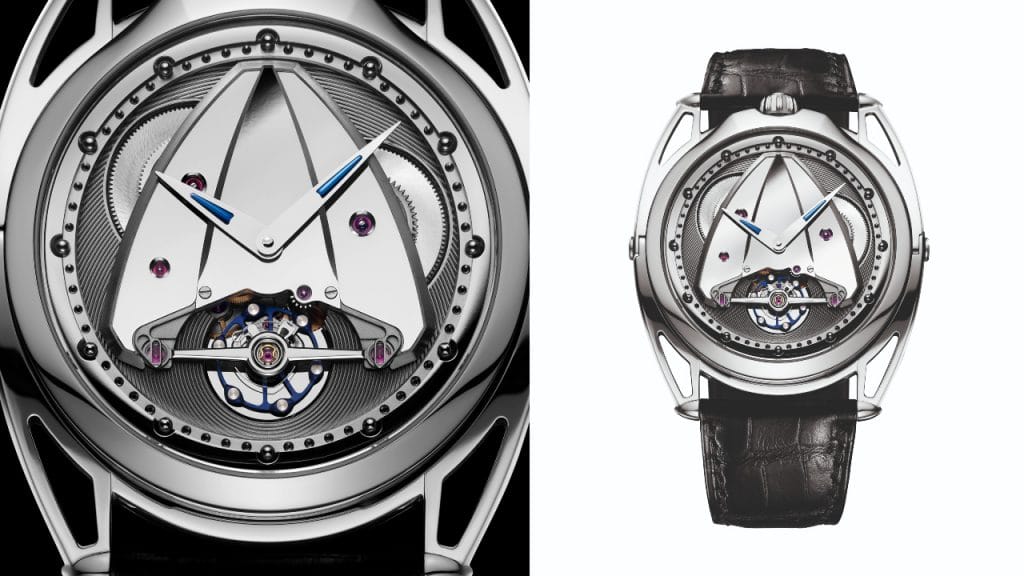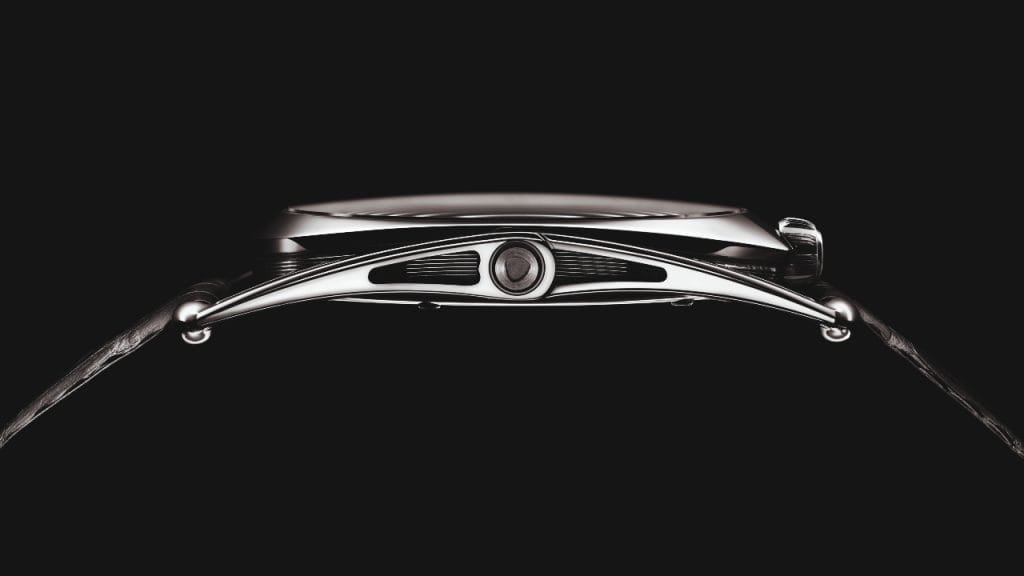There is something unconcerned in the way De Bethune watches combine the classical and the cutting-edge – Roman numerals, traditional two- and three-handers, and 6 o’clock tourbillons, for example, alongside the skeleton lugs, wedge-shaped plates and blued titanium. Only an independent watchmaker would dare so effortlessly in such manner, and that indeed describes De Bethune. Founded just 18 years ago, today it has a 30-strong workforce at its manufacture in the Swiss Jura mountains. Relatively quietly, it has since amassed an impressive body of highly technical work. Co-founder Denis Flageollet is a master watchmaker that began his career as an antique restorer, and from the start his manufacture has been driven by innovation while maintaining a reverence for the classics. Over the years, it has produced 27 calibres, filed eight patents, and has developed its own key components including hairsprings, balance wheels, and escapements. It has also picked up three Grand Prix d’Horlogerie de Geneve (GPHG) prizes over the last decade.
De Bethune’s ambitions do veer artistic as well. Its eclectic portfolio counts many whimsical outings – a limited edition based on the Mayan calendar, for instance, or one-offs for Only Watch, or the Dream Watch sculptures. Its core collections, however, are purely horological in focus, and though it is difficult to choose highlights there are a couple of emblematic constants for the brand.

The first is the DB25 Starry Varius: a two-hander just 8.8mm thick, with a 42mm case available in several choices including titanium (RM272,200). It is De Bethune’s simplest and most classical representative: a clean, time-only watch with an astronomical theme, and where Breguet-style hands are paired with Roman numerals. But the hand-wound movement within pulls no punches and is outfitted with De Bethune’s latest horological advancements. It has a silicon escape wheel, a six-day power reserve enabled by a self-regulating twin barrel, and three patents: one each for the titanium balance wheel, hairspring, and shock-absorbing system.
View this post on Instagram
There is little classical about the view of the movement through the display caseback, which is dominated by the delta-shaped mainplate that is a De Bethune signature. Externally, the most eye-catching feature is the dial, of which the centre is a strikingly polished plate of blued titanium. It acts as a backdrop for a starry display of the Milky Way, created with gold pins for the larger stars – which are individually hand-mounted – and laser engraving and gilding for the smaller ones.
As the DB25 is classical, the DB28 is its determinedly futuristic counterpart. This is the watch that put De Bethune on the map: in 2011, it bagged the GPHG’s ‘Aiguille d’Or’ – the best overall watch of the year, and the most coveted GPHG award.
2020 is the tenth anniversary of the DB28, and it sees several new incarnations. The DB28XP is one that retains the hallmarks of the prize-winning model – monochromatically presented almost entirely in titanium, with exposed balance wheel and delta-shaped mainplate the most prominent dial-side feature – but the 43mm case has been slimmed down to just 7.2mm. Another hallmark is the floating lugs, which are anchored at the midpoint of the case and allows the watch to pivot and find the most comfortable position on the wrist. It also allows better access to the crown, which is at 12 o’clock. Blued titanium, another reoccurring theme, has a subtle presence as ornamentation of the hands.
View this post on Instagram
The process to create blued titanium is yet another in-house development for De Bethune, and the brand is clearly proud of it – proud enough, in fact, to go all-out and create the DB28 Kind of Blue Milky Way (RM521,700). Limited to 10 pieces, may just be the bluest watch in existence. This model includes a torque indicator on the dial side, between 2 and 3 o’clock, while a power reserve indicator is on the back. A spherical moonphase – yet another De Bethune invention – sits at 6 o’clock. It also takes a cue from the Starry Varius with a mirror-polished plate in the centre of the dial which hosts a laser-engraved Milky Way starfield.

It is somewhat of a cliché to say that photographs never do justice to a fine watch, but this is particularly true of De Bethune. It brings a unique, refreshing viewpoint, and not just in terms of mechanical contributions, but in visual and tactile terms as well. Whether the convex chapter ring of the Starry Varius, or the fascinating depth of the DB28’s overlapping plates, or the colour and character of the blued titanium, or the way the floating lugs really do affect the feel of the watch on the wrist – there is a lot to take in, and the watch enthusiast owes it to themselves to take a look.




